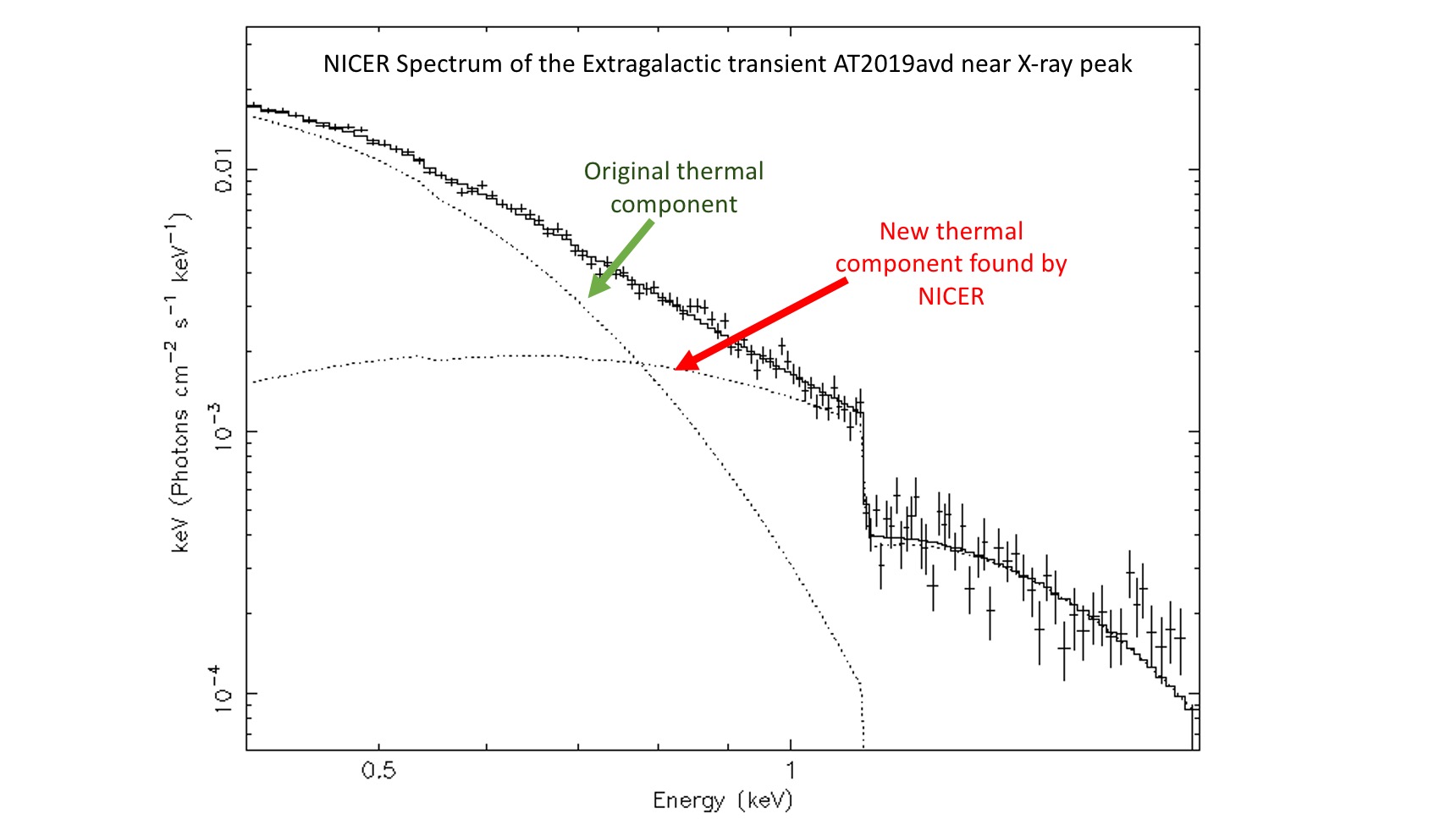NICER / ISS Science Nugget
for September 24, 2020
NICER observes a very bright X-ray flare from an accreting supermassive black hole 400 Million Years Ago
On 19 September 2020, NICER responded to a target of opportunity (ToO) request to observe the unusual extragalactic transient AT2019avd, originating from the nucleus of a galaxy at a distance of roughly 120 megaparsecs (400 million light-years). This transient was discovered in the optical waveband in February of 2019 and has been
active ever since. NASA's Swift telescope found that it had brightened by a factor of 1000 on 16 September 2020, following which NICER was alerted to acquire deeper X-ray observations.
AT2019avd's X-ray spectrum from 28 April 2020, as measured by the Russian-German Spektr-RG space observatory, can be described by thermal emission with a temperature of roughly 1 million Kelvin. Surprisingly, the NICER spectra show that a second source of emission has formed over the last ~4 months, another thermal source but, at a temperature of 2.5 million Kelvin, warmer than the previously-detected spectral component. These initial NICER observations were reported by Pasham et al.
Astronomer's Telegram #14036.
The overall X-ray flux increase of greater than 1000x over the last five year (from 1.7e-14 to 1.7e-11 erg/s/cm^2) and the sudden appearance of soft X-ray thermal emission suggest that AT2019avd is a stellar tidal disruption event, in which a star venturing too close to the galaxy's central supermassive black hole has been torn apart and its debris stream is now being accreted by the black hole. However, the optical spectra obtained from the ground suggest that accretion of material was already taking place before the X-ray and optical flares occurred, while the huge recent flux enhancement and variability (factors of ~4 from one ISS orbit to the next) are unusual even in a tidal-disruption scenario. NICER is planning additional observations in the coming weeks to better characterize this exotic transient.

Figure 1: NICER X-ray spectrum of AT2019avd near its X-ray peak, highlighting the two underlying thermal emission components.
<< Previous
Main Index
Next >>